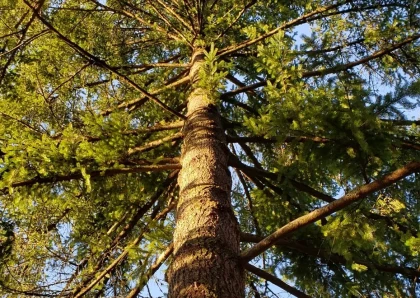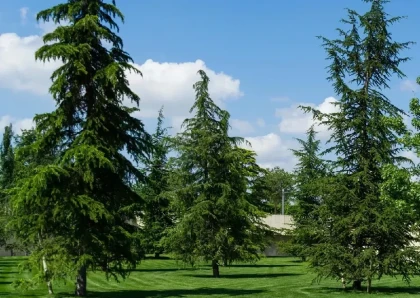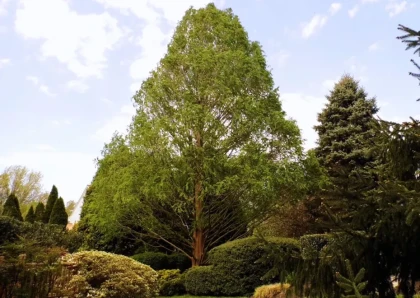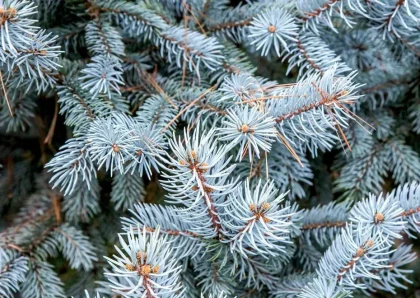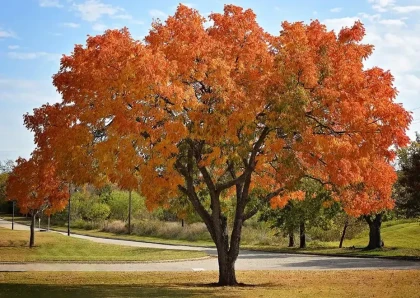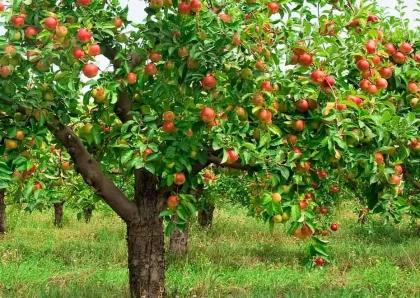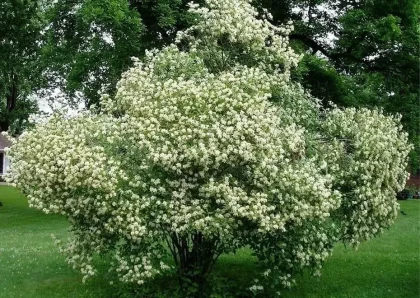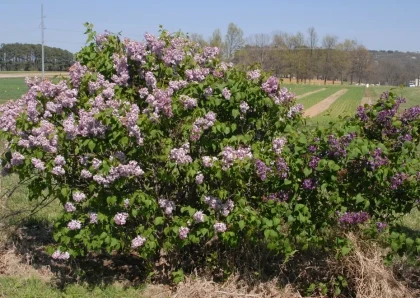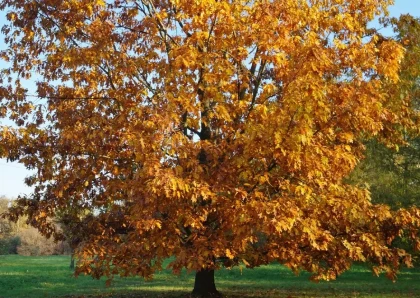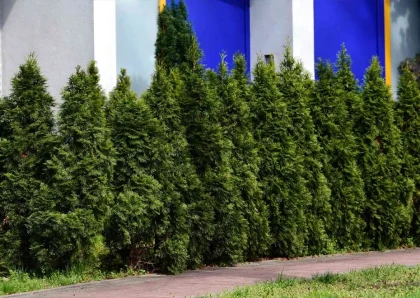
Eastern Red Cedar Tree
Overview
The Eastern Red Cedar, scientifically known as Juniperus virginiana, is a species of evergreen tree native to eastern North America. It belongs to the cypress family (Cupressaceae) and is not a true cedar, but its name is derived from the aromatic red wood it produces.
Here are some key characteristics of the Eastern Red Cedar:
- Appearance: It is a small to medium-sized tree, typically reaching heights of 40 to 50 feet (12 to 15 meters) but can occasionally grow taller. It has a conical shape when young and becomes more irregular with age. The foliage consists of scale-like needles that are dark green in color.
- Distribution: As the name suggests, the Eastern Red Cedar is mainly found in the eastern parts of North America. Its range extends from southeastern Canada down to the Gulf of Mexico and spans from the Atlantic coast to the Great Plains.
- Habitat: Eastern Red Cedars are adaptable and can thrive in a wide range of habitats, including dry and rocky soils, sandy areas, and open woodlands. They are often found in old fields and along fence rows.
- Berries: The tree produces small blue to purple berries that are actually cones with fleshy, berry-like coverings. These berries are an important food source for various wildlife, including birds like cedar waxwings and certain small mammals.
- Aromatic wood: The wood of the Eastern Red Cedar has a distinct reddish color and a pleasant, spicy aroma. It is highly valued for its durability and natural resistance to decay and insect damage. As a result, it is often used for making furniture, chests, and other outdoor applications.
- Ecological importance: Eastern Red Cedars play a vital ecological role in providing habitat and food for wildlife. They also help prevent soil erosion and act as windbreaks in open landscapes.
- Uses: Apart from its use in woodworking, Eastern Red Cedar has been utilized for various purposes by indigenous peoples and early settlers. It was used for medicinal purposes, making dyes, and in religious ceremonies.
Different Cultivars of the Eastern Red Cedar
- 'Glauca' or 'Grey Owl': This cultivar has bluish-gray foliage, giving it a distinctive appearance compared to the typical dark green foliage of the species.
- 'Taylor': The 'Taylor' cultivar is a smaller variety of Eastern Red Cedar with a compact, dense growth habit. It is often used as a landscaping shrub or for hedging.
- 'Emerald Sentinel': This cultivar is known for its narrow, columnar shape, making it an excellent choice for vertical accents in landscaping.
- 'Burkii': The 'Burkii' cultivar has a more pyramidal shape and denser foliage than the species.
- 'Pendula': The 'Pendula' variety is characterized by its weeping branches, which cascade downward, giving it a unique and ornamental appearance.
- 'Canaertii': This cultivar is prized for its straight trunk and conical shape, making it a popular choice for use as a Christmas tree.
Different types of wood products can be made from Eastern Red Cedar tree
- Furniture: Eastern Red Cedar wood is commonly used to make indoor and outdoor furniture. It is particularly popular for crafting rustic-style furniture due to its unique reddish color and natural grain patterns.
- Chests and Closets: The aromatic properties of Eastern Red Cedar wood make it an excellent choice for making chests, closets, and other storage units. The pleasant scent helps repel moths and other insects, making it ideal for storing clothing and linens.
- Cabinets and Paneling: The wood's attractive appearance and durability make it suitable for use in cabinetry and wall paneling, adding a touch of rustic charm to interior spaces.
- Cedar Shingles and Siding: Eastern Red Cedar wood is used for making shingles and siding for buildings. It provides a natural, weather-resistant covering with a pleasing appearance.
- Outdoor Structures: The wood is used in the construction of outdoor structures like fences, decks, and pergolas due to its resistance to weathering and decay.
- Garden Furniture and Planters: Eastern Red Cedar is an excellent choice for crafting garden furniture, planters, and other outdoor decorative items.
- Aromatic Products: The wood is also processed into aromatic products, such as cedar sachets, cedar blocks, and cedar essential oils, which are used to repel insects and add a pleasant scent to closets and drawers.
- Crafts and Woodworking Projects: Crafters and hobbyists often use Eastern Red Cedar wood for various woodworking projects, such as carving, turning, and small decorative items.
- Cedar Oil and Extracts: Essential oils and extracts from Eastern Red Cedar are used in aromatherapy and natural remedies for their calming and insect-repelling properties.
- Musical Instruments: In some cases, Eastern Red Cedar wood is used in the construction of musical instruments like guitars and mandolins, especially for soundboards or tops due to its resonance and tonal properties.
Benefits of Eastern Red Cedar tree:
- Wildlife Habitat: Eastern Red Cedars provide important habitat and food sources for various wildlife species, including birds and small mammals.
- Soil Erosion Control: The extensive root system of Eastern Red Cedars helps stabilize soil and prevent erosion, making them valuable in preventing land degradation.
- Windbreaks and Shelter: Planted as windbreaks, Eastern Red Cedars help protect crops, livestock, and other plants from strong winds, improving agricultural productivity.
- Timber and Wood Products: The wood of Eastern Red Cedar is highly prized for its durability, resistance to decay, and pleasant aroma. It is used to make furniture, closets, chests, and other wood products.
- Aromatic Properties: The distinct scent of Eastern Red Cedar wood acts as a natural insect repellent, making it suitable for use in closets, storage units, and sachets to deter moths and other pests.
- Landscaping: Eastern Red Cedars are often used in landscaping for their attractive evergreen foliage, adding beauty and interest to gardens, parks, and landscapes.
- Medicinal Uses: Some Native American tribes and early settlers used parts of the Eastern Red Cedar for medicinal purposes, such as teas and poultices to treat various ailments.
- Air Quality Improvement: Like other trees, Eastern Red Cedars contribute to improving air quality by absorbing carbon dioxide and releasing oxygen through the process of photosynthesis.
Tips for planting and maintaining Eastern Red Cedar tree:
Planting:
- Choose the Right Location: Eastern Red Cedars prefer full sun but can tolerate partial shade. Select a location with well-draining soil and adequate space for the tree to grow to its full size.
- Spacing: Provide enough space between individual trees to allow them to reach their mature size without overcrowding. For landscape plantings, consider spacing them at least 10 to 15 feet apart.
- Planting Time: The best time to plant Eastern Red Cedars is in the early spring or fall when temperatures are cooler, allowing the trees to establish their root systems before the hot summer or cold winter.
- Prepare the Planting Hole: Dig a hole that is about twice the width of the root ball and just as deep. Loosen the soil in the hole to encourage root growth.
- Planting Depth: Plant the tree at the same depth it was in the nursery container. Avoid planting it too deep, as this can lead to root rot.
- Watering: After planting, water the tree thoroughly to settle the soil and help the roots establish. Keep the tree well-watered during the first year, especially during dry periods.
Maintenance:
- Watering: Eastern Red Cedars are relatively drought-tolerant once established, but they still benefit from regular watering, especially during dry spells. Water deeply rather than frequent shallow watering.
- Mulching: Apply a layer of organic mulch around the base of the tree, but avoid piling it against the trunk. Mulch helps retain moisture, suppresses weeds, and regulates soil temperature.
- Pruning: Minimal pruning is usually required for Eastern Red Cedars. Remove any dead, diseased, or damaged branches as needed. Prune to maintain a balanced shape, but avoid excessive trimming.
- Fertilization: In most cases, Eastern Red Cedars do not require regular fertilization. However, if the soil is nutrient-deficient, you can apply a balanced, slow-release fertilizer in early spring.
- Pest and Disease Management: Eastern Red Cedars are generally resistant to pests and diseases. However, occasional pest issues, like bagworms or cedar-apple rust, may arise. Monitor the tree regularly and take appropriate action if needed.
- Winter Protection: In regions with harsh winters, young Eastern Red Cedars might benefit from some winter protection, such as burlap wrapping, to shield them from winter burn and damage.
- Avoid Overwatering: While Eastern Red Cedars need regular watering during their establishment phase, avoid overwatering, as they are susceptible to root rot in waterlogged soil.
Cons of planting Eastern Red Cedar tree:
- Invasive Potential: Eastern Red Cedars can become invasive in certain regions outside their native range. They may outcompete native vegetation and disrupt local ecosystems.
- Space Requirements: Eastern Red Cedars can grow quite large over time, and if not given enough space, they may crowd out other plants and structures in a landscape.
- Allergenic Pollen: The pollen produced by Eastern Red Cedars can cause allergies in some individuals, leading to respiratory issues during their pollination period.
- High Seed Production: These trees produce a large number of seeds, leading to the potential for seedlings to sprout and spread rapidly in the surrounding areas.
- Prone to Some Pests and Diseases: While generally resistant to many pests and diseases, Eastern Red Cedars can still be affected by certain issues like bagworms or cedar-apple rust in specific conditions.
- Longevity of Wood Products: While Eastern Red Cedar wood is durable and rot-resistant, its use for outdoor projects might lead to concerns about longevity, especially when exposed to harsh weather conditions.
- Fire Hazard: Eastern Red Cedars can be highly flammable, and in regions prone to wildfires, they may contribute to fire spread and intensity.
- Soil Acidification: The fallen needles and debris from Eastern Red Cedars can lead to soil acidification over time, which may negatively impact certain plant species.
Conclusion
In conclusion, the Eastern Red Cedar (Juniperus virginiana) is a remarkable tree native to eastern North America. It offers various benefits, making it a popular choice for landscaping and woodworking projects. The tree provides essential wildlife habitat, helps control soil erosion, and acts as a windbreak, enhancing agricultural landscapes.
Eastern Red Cedar wood's unique properties, including its durability and pleasant aroma, make it highly sought after for crafting furniture, closets, chests, and other wood products. Additionally, its aromatic qualities are harnessed to create insect-repellent products.
However, it is essential to be mindful of some potential drawbacks associated with Eastern Red Cedar planting. The tree's invasive potential and the need for adequate space are factors to consider, especially outside its native range. Furthermore, its pollen can cause allergies in some individuals during the pollination period.
Overall, Eastern Red Cedar trees offer numerous benefits and add beauty to the natural environment and landscapes. When carefully selected and planted in appropriate settings, these trees can thrive, providing lasting value and enjoyment for humans and wildlife alike. Sustainable management and proper maintenance will help preserve this valuable tree species for future generations.
FAQs
- What is the scientific name of the Eastern Red Cedar tree?
The scientific name of the Eastern Red Cedar tree is Juniperus virginiana. - Is the Eastern Red Cedar a true cedar tree?
No, the Eastern Red Cedar is not a true cedar. It belongs to the cypress family (Cupressaceae) and is more closely related to juniper trees. - Where is the Eastern Red Cedar tree native to?
The Eastern Red Cedar is native to eastern North America. Its range extends from southeastern Canada down to the Gulf of Mexico and spans from the Atlantic coast to the Great Plains. - What are some key characteristics of the Eastern Red Cedar?
Eastern Red Cedars are small to medium-sized trees, typically reaching heights of 40 to 50 feet (12 to 15 meters). They have a conical shape when young, becoming more irregular with age. The foliage consists of scale-like needles that are dark green in color. - What types of wood products can be made from Eastern Red Cedar?
Eastern Red Cedar wood is highly valued for its durability, natural resistance to decay, and pleasant aroma. It is used to make furniture, closets, chests, cabinets, shingles, siding, outdoor structures, and various decorative items. - Are Eastern Red Cedars good for wildlife?
Yes, Eastern Red Cedars are beneficial for wildlife. They provide important habitat and food sources for various wildlife species, including birds and small mammals. - How do I care for an Eastern Red Cedar tree?
To care for an Eastern Red Cedar tree, ensure it is planted in a location with well-draining soil and adequate sunlight. Water the tree regularly, especially during its establishment phase. Minimal pruning is usually required, and the tree is generally resistant to pests and diseases. - Can I plant Eastern Red Cedar trees outside their native range?
Planting Eastern Red Cedars outside their native range should be done with caution, as they can become invasive in certain regions and outcompete native vegetation. - What are the uses of Eastern Red Cedar besides woodworking?
Eastern Red Cedar has been historically used for various purposes, including medicinal uses by Native American tribes, making dyes, and in religious ceremonies. Additionally, its aromatic properties are utilized in insect-repellent products. - Are Eastern Red Cedar trees fire-resistant?
No, Eastern Red Cedar trees are highly flammable and can contribute to fire spread and intensity in regions prone to wildfires.




